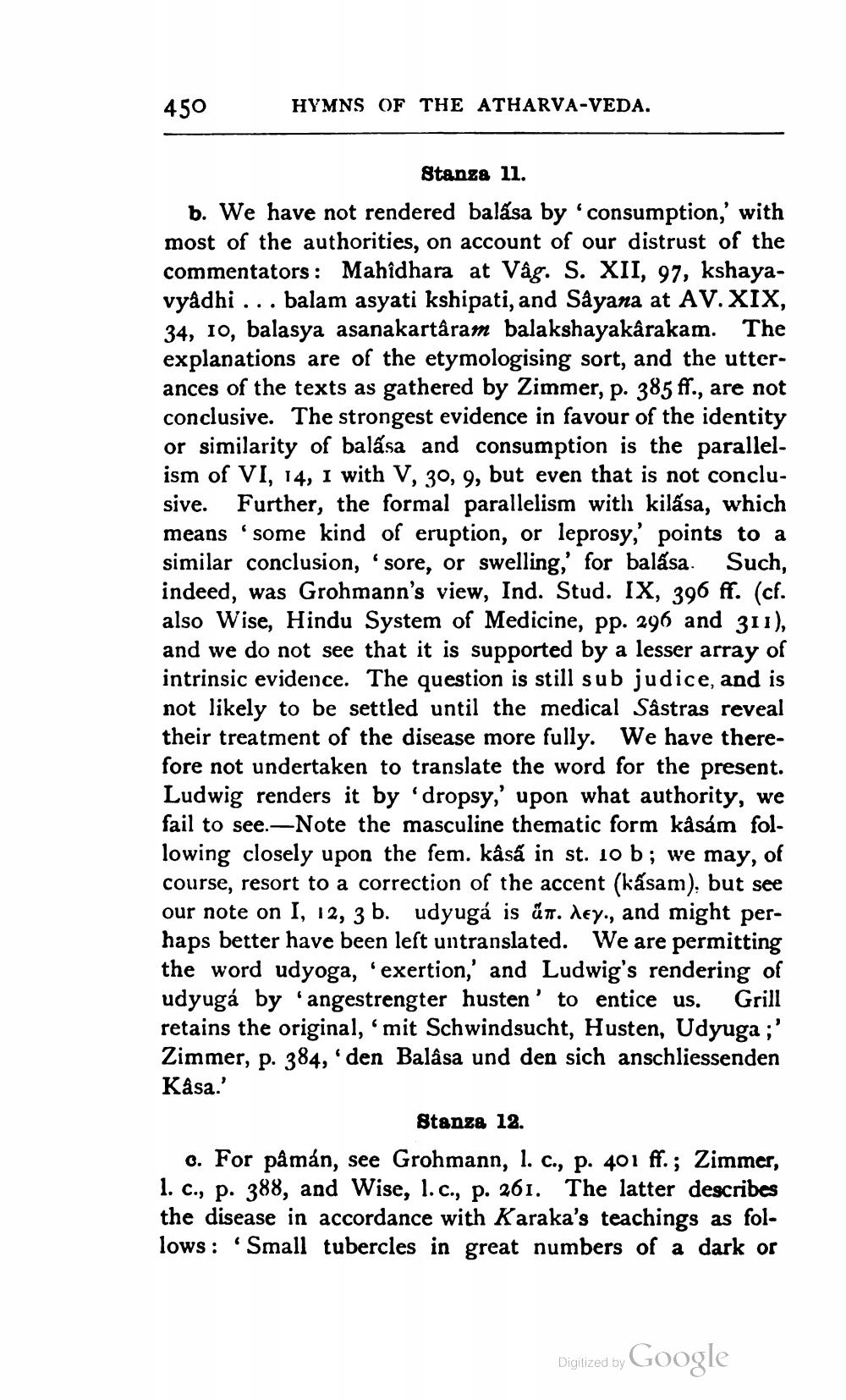________________
450
HYMNS OF THE ATHARVA-VEDA.
Stanza 11. b. We have not rendered balása by 'consumption,' with most of the authorities, on account of our distrust of the commentators: Mahîdhara at Vâg. S. XII, 97, kshayavyâdhi ... balam asyati kshipati, and Sayana at AV. XIX, 34, 10, balasya asanakartâram balakshayakârakam. The explanations are of the etymologising sort, and the utterances of the texts as gathered by Zimmer, p. 385ff., are not conclusive. The strongest evidence in favour of the identity or similarity of balãsa and consumption is the parallelism of VI, 14, 1 with V, 30, 9, but even that is not conclusive. Further, the formal parallelism with kilása, which means 'some kind of eruption, or leprosy, points to a similar conclusion, 'sore, or swelling,' for balása. Such, indeed, was Grohmann's view, Ind. Stud. IX, 396 ff. (cf. also Wise, Hindu System of Medicine, pp. 296 and 311), and we do not see that it is supported by a lesser array of intrinsic evidence. The question is still sub judice, and is not likely to be settled until the medical Sastras reveal their treatment of the disease more fully. We have therefore not undertaken to translate the word for the present. Ludwig renders it by 'dropsy,' upon what authority, we fail to see.—Note the masculine thematic form kâsám following closely upon the fem. käsa in st. 10 b; we may, of course, resort to a correction of the accent (kásam), but see our note on I, 12, 3 b. udyugá is án. dey., and might perhaps better have been left untranslated. We are permitting the word udyoga, exertion,' and Ludwig's rendering of udyugá by angestrengter husten' to entice us. Grill retains the original, mit Schwindsucht, Husten, Udyuga;' Zimmer, p. 384,'den Balâsa und den sich anschliessenden Kåsa.'
Stanza 12. 0. For påmán, see Grohmann, 1. c., p. 401 ff.; Zimmer, 1. c., p. 388, and Wise, 1.c., p. 261. The latter describes the disease in accordance with Karaka's teachings as follows: 'Small tubercles in great numbers of a dark or
Digized by Google




